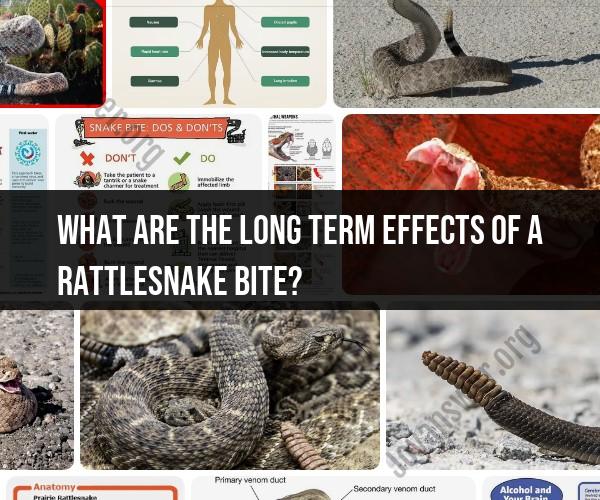What are the long term effects of a rattlesnake bite?
A rattlesnake bite can have a range of immediate and potential long-term effects, depending on several factors, including the species of rattlesnake, the location of the bite, the amount of venom injected, and the promptness of medical treatment. Immediate effects can include severe pain, swelling, and tissue damage, while long-term effects may vary but can include:
Tissue Damage and Scarring: Rattlesnake venom is cytotoxic, meaning it can cause significant tissue damage at the site of the bite. This can result in scarring and loss of function, especially if the bite occurred on a limb. Depending on the severity of tissue damage, individuals may experience lasting impairment or cosmetic changes.
Nerve Damage: In some cases, rattlesnake venom can damage nerves near the bite site. This can lead to long-term neurological effects, such as numbness, tingling, weakness, or altered sensation in the affected area. Nerve damage may persist even after the wound has healed.
Joint Stiffness: Swelling and tissue damage from a rattlesnake bite can affect nearby joints. If not adequately managed and rehabilitated, this can lead to long-term joint stiffness and reduced range of motion.
Infection and Wound Complications: Bacterial infections can develop in the wound, especially if it is not properly cleaned, treated, and monitored. Long-term complications from untreated infections can include chronic pain, tissue damage, and systemic illness.
Psychological Effects: A rattlesnake bite can be a traumatic experience, leading to long-term psychological effects such as anxiety, post-traumatic stress disorder (PTSD), or fear of snakes and outdoor activities.
Secondary Health Issues: In some cases, complications from rattlesnake envenomation, such as kidney damage or blood clotting problems, may lead to long-term health issues that require ongoing medical management.
It's important to note that the majority of rattlesnake bites, especially when promptly treated with antivenom and appropriate medical care, do not result in severe long-term effects. However, the potential for long-term consequences underscores the importance of seeking immediate medical attention if bitten by a rattlesnake.
Rattlesnake bites are medical emergencies, and treatment should be administered as soon as possible to minimize the risk of severe and lasting effects. Early intervention with antivenom, wound care, and supportive treatments can significantly improve the prognosis and reduce the likelihood of long-term complications. If you or someone you know is bitten by a rattlesnake, seek emergency medical care immediately.












